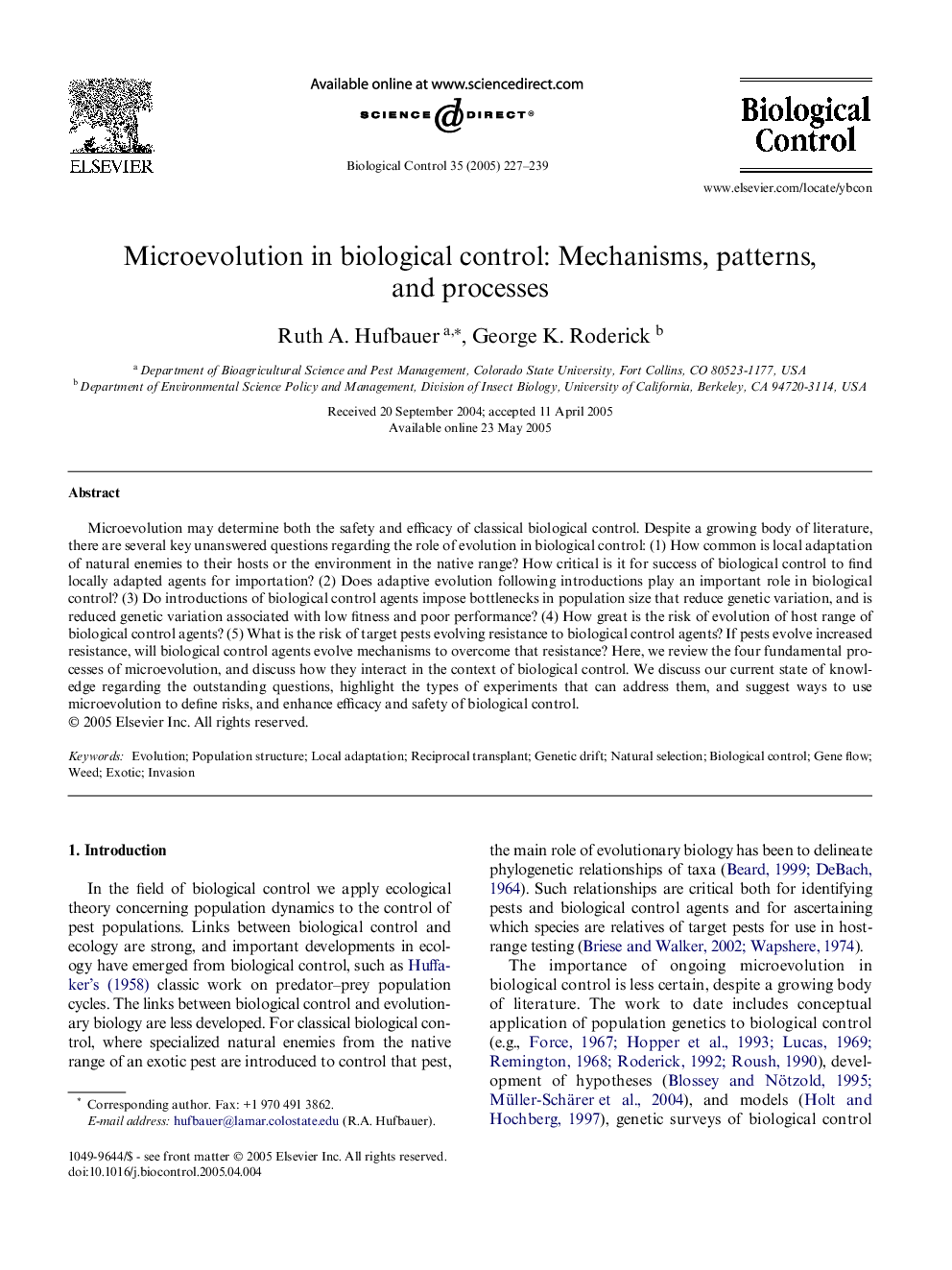| Article ID | Journal | Published Year | Pages | File Type |
|---|---|---|---|---|
| 9471891 | Biological Control | 2005 | 13 Pages |
Abstract
Microevolution may determine both the safety and efficacy of classical biological control. Despite a growing body of literature, there are several key unanswered questions regarding the role of evolution in biological control: (1) How common is local adaptation of natural enemies to their hosts or the environment in the native range? How critical is it for success of biological control to find locally adapted agents for importation? (2) Does adaptive evolution following introductions play an important role in biological control? (3) Do introductions of biological control agents impose bottlenecks in population size that reduce genetic variation, and is reduced genetic variation associated with low fitness and poor performance? (4) How great is the risk of evolution of host range of biological control agents? (5) What is the risk of target pests evolving resistance to biological control agents? If pests evolve increased resistance, will biological control agents evolve mechanisms to overcome that resistance? Here, we review the four fundamental processes of microevolution, and discuss how they interact in the context of biological control. We discuss our current state of knowledge regarding the outstanding questions, highlight the types of experiments that can address them, and suggest ways to use microevolution to define risks, and enhance efficacy and safety of biological control.
Keywords
Related Topics
Life Sciences
Agricultural and Biological Sciences
Agronomy and Crop Science
Authors
Ruth A. Hufbauer, George K. Roderick,
